Field Strategy
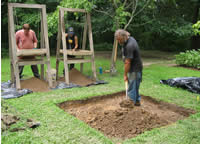 Prior to this year's investigation, the Weston Manor property had never been subjected to comprehensive archaeological evaluation. The most intensive previous work appears to have been carried out in 1973 by Ted Sweetland and in 1977-78 by Steve Thomas, both apparently working in conjunction with the Appomattox Chapter of the Archeological Society of Virginia. The only descriptions of the work are comments made on the official Department of Historic Resources site form (44PG15), and these indicate most of the "trenching" and "digs" occurred west of the house.
Prior to this year's investigation, the Weston Manor property had never been subjected to comprehensive archaeological evaluation. The most intensive previous work appears to have been carried out in 1973 by Ted Sweetland and in 1977-78 by Steve Thomas, both apparently working in conjunction with the Appomattox Chapter of the Archeological Society of Virginia. The only descriptions of the work are comments made on the official Department of Historic Resources site form (44PG15), and these indicate most of the "trenching" and "digs" occurred west of the house.
Our fieldwork for the 2003 season took a more systematic approach. We followed a fairly standard process, tailoring it to conditions at Weston Manor. To get a better sense of archaeological deposits, we sampled the entire property with a grid of shovel tests. 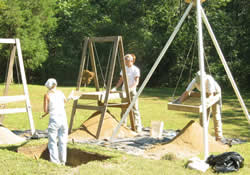 These round holes are not much larger than a dinner plate and usually dug a foot or so deep, until the subsoil is reached. To ensure recovery of the small and broken artifacts, all soil from shovel tests is screened through quarter-inch wire mesh. Artifacts and soil characteristics from these small tests help zero in on areas that might contain evidence of structural remains, activity areas, or landscape features.
These round holes are not much larger than a dinner plate and usually dug a foot or so deep, until the subsoil is reached. To ensure recovery of the small and broken artifacts, all soil from shovel tests is screened through quarter-inch wire mesh. Artifacts and soil characteristics from these small tests help zero in on areas that might contain evidence of structural remains, activity areas, or landscape features.
For this season's fieldwork, we select a few of these promising areas for larger-scale excavation. Square "test units," usually a meter (3.3 ft.) on a side, allow more controlled excavation than shovel tests. Archaeologists remove the soil from these units gradually, by scraping with flat shovels and trowels. Artifacts are bagged separately according to soil layers and/or depths. Besides artifacts, we always hope to find features—the real "treasure troves" of archaeological sites. 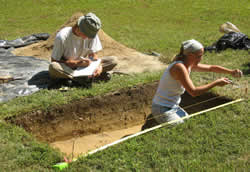 These are deposits of soil or other material left unscathed by the typical soil mixing that results from plowing, landscaping, and other ground-disturbing activities. In features, the relative positions of artifacts, soil, and sometimes structural remains have remained unchanged since they were first deposited.
These are deposits of soil or other material left unscathed by the typical soil mixing that results from plowing, landscaping, and other ground-disturbing activities. In features, the relative positions of artifacts, soil, and sometimes structural remains have remained unchanged since they were first deposited.
As fieldwork progresses, archaeologists keep careful records, using notes, drawings, and photographs. Good record-keeping is essential to successful archaeological research. Not only does this information provide the building blocks for interpreting the site. Along with collected artifacts and samples, field records are all that remains once an area has been excavated. Following the fieldwork stage, archaeologists will spend just as much time analyzing artifacts, interpreting the excavations, and reporting the results. From the traces of human activity left behind in the ground, we can begin to answer questions about what life was like for those who lived and worked at Weston over the past centuries.
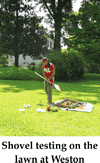
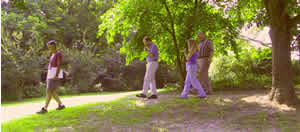
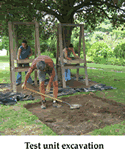
 Skip to main content
Skip to main content
